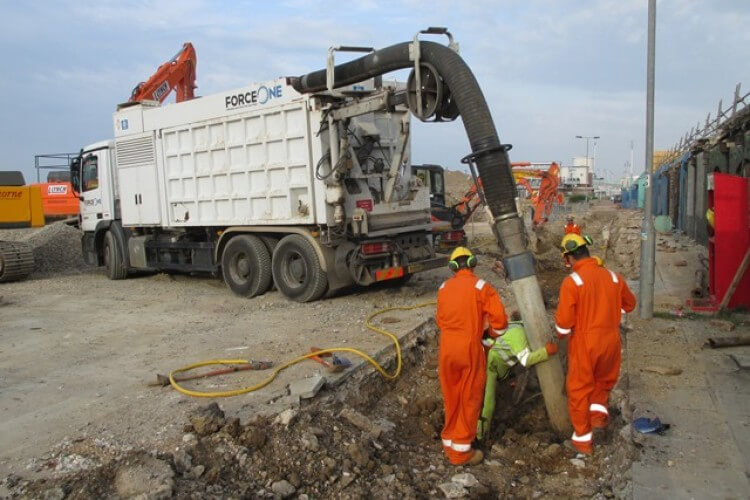Industry Specific Applications of Vacuum Excavation
10 industries that rely on vacuum excavation.
Posted 14:11 February 19, 2023
Last Updated 14:11 February 19, 2023

Vacuum excavation is a non-destructive digging method that uses high-pressure air or water to break up soil, and a vacuum to remove the debris. This method has many applications in a variety of industries where precise, safe and efficient digging is needed. In this article, we will discuss ten specific industry applications of vacuum excavation.
1. Construction: In the construction industry, vacuum excavation is used to safely excavate for foundation work, utility installations, and other projects where precision is important. The ability to expose buried utilities and avoid damage to them is a major benefit of vacuum excavation. Vacuum excavation can also be used to create post holes, pier holes, and other small excavations.
2. Municipalities: Vacuum excavation is a preferred method for municipalities when it comes to uncovering buried utility lines, pipes, and other underground infrastructure. With vacuum excavation, the chance of damaging these utilities is reduced, minimizing repair costs, and avoiding service disruptions.
3. Electrical and Telecommunications: The electrical and telecommunications industry use vacuum excavation to install and repair underground cabling, conduit and ducts. By using vacuum excavation, damage to existing underground utilities is avoided, and installations are made more precise.
4. Oil and Gas: In the oil and gas industry, vacuum excavation is used to uncover buried pipelines and other infrastructure for maintenance, inspection, and repair. By using vacuum excavation, the risk of damaging underground assets is reduced, and safety risks are minimized.
5. Environmental Remediation: Vacuum excavation is an ideal method for environmental remediation as it is safe and minimizes the disturbance to contaminated soil. By removing only the necessary soil and leaving the surrounding soil undisturbed, the impact on the environment is reduced.
6. Mining: Vacuum excavation is used in the mining industry to expose ore bodies, as well as to dig narrow trenches and drill holes for blasting. Vacuum excavation is preferred as it is less likely to cause damage to sensitive underground assets, and it reduces the amount of dust generated.
7. Archaeology: Vacuum excavation is used in archaeological digs to uncover artifacts and other historical items. The method is preferred as it is non-invasive, and allows archaeologists to excavate with precision, minimizing the risk of damaging important items.
8. Landscaping: In landscaping, vacuum excavation is used to create small holes for planting trees, shrubs, and other vegetation. It can also be used to remove soil or debris from areas that are difficult to access, such as under trees or around rock formations.
9. Transportation: The transportation industry uses vacuum excavation to expose and repair underground infrastructure, such as tunnels and bridges. By using vacuum excavation, the risk of damaging existing infrastructure is reduced, and repairs are made more precisely.
10. Military: Vacuum excavation is also used in the military for a variety of applications, including uncovering underground bunkers, excavating for foundations of buildings, and creating trenches. The non-destructive nature of vacuum excavation is particularly useful in military applications, where damage to sensitive infrastructure can have serious consequences.
In conclusion, vacuum excavation is a versatile method that can be applied to a wide range of industries where precision, safety, and non-invasive excavation is needed. Its non-destructive nature makes it an ideal method for uncovering buried utilities, infrastructure, and other sensitive assets. By using vacuum excavation, these assets are exposed with a lower risk of damage, and with greater precision, resulting in cost savings, improved safety, and a reduced impact on the environment.
